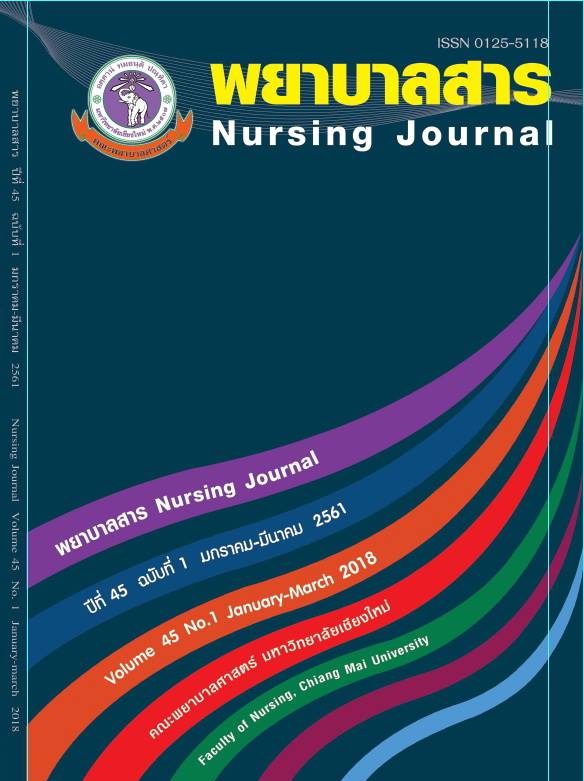The Application of a Blended Learning Approach to an Epidemiology Course
Keywords:
Blended Learning, Thai Qualifications Framework for Higher Education (TQF) Outcomes, Epidemiology CourseAbstract
This article presents the application of a blended learning approach to an epidemiology course. The learners consisted of 43 students who registered in the course for the 2rd semester of academic year 2014. The results showed that the post-test TQF scores with the expected learning outcomes of students in five domains, namely: ethical and moral development (p<0.01), interpersonal skills and responsibility (p<0.01), analytical and communication skills (p<0.05), and numerical analysis, communication and information technology (p<0.01). Student (61.9%) indicated that they were very satisfy with blended learning.
References
กมลวรรณ เฉิดฉันท์พิพัฒน และ อนิรุทธ์ สติมั่น (2554). การศึกษาผลการเรียนแบบผสมผสานที่มีแบบทางการเรียนต่างกัน. วารสารศิลปากรศึกษาศาสตร์วิจัย, 2(2), 13-19.
พรเทพ เมืองแมน, และ แวฮาซัน แวหะมะ. (2555). การพัฒนารูปแบบการเรียนรู้แบบผสมผสานรายวิชา เทคโนโลยีกราฟิกและการพิมพ์เพื่อการสื่อสารการศึกษา สำหรับนักศึกษาระดับปริญญาตรี คณะศึกษาศาสตร์ มหาวิทยาลัยสงขลานครินทร์ วิทยาเขตปัตตานี. วารสารศึกษาศาสตร์ มหาวิทยาลัยสงขลานครินทร์ วิทยาเขตปัตตานี, 23(3), 32-41.
ฐิติชัย รักบํารุง. (2555). Blended-learning: การเรียนรู้แบบผสมผสาน. วารสารครุศาสตร์ มหาวิทยาลัย ราชภัฏมหาสารคาม, 1(16), 31-40.
อภิรดี นันท์ศุภวัฒน์ และ เรมวล นันท์ศุภวัฒน์. (2556). ความพึงพอใจและผลลัพธ์ของการจัดการเรียน การสอนแบบผสมผสานในกระบวนวิชาภาวะผู้นำและการจัดการทางการพยาบาลของนักศึกษาพยาบาล คณะพยาบาลศาสตร์ มหาวิทยาลัยเชียงใหม่. พยาบาลสาร, 40, 47-60.
Carman, J. M. (2005). Blended learning design: Five key ingredients. New York: Lippincott.
Driscoll, M. (2002). Blended learning. New York: Navowave.
Korkmaz, O., & Karakus, U. (2009). The impact of blended learning model on student attitudes towards geography course and their critical thinking dispositions and levels. The Turkish Online Journal of Educational Technology, 8(4), 51-63
Singh, H., & Reed, C. (2004). Achieving success with blended learning: A white paper. New York: Navowave.
Translated Thai References
Tantranont, K., & Tuanrat, W. (2017). Effects of blended learning on learning
outcomes in an epidemiology course. Nursing Journal, 44(3), 144-152.
Cherdchanpipat, K., & Satiman, A. (2011). A Study of learning outcomes of blended learning with different interactive learning types of introduction to educational media course for undergraduate students, faculty of education, silpakron university. Silpakorn Educational Research Journal, 2(2), 223-233.
Muangman, P., & Weahama, W. (2012). The development of blended learning model in graphic and printing technology for educational communication course for undergraduate students, faculty of education, prince of songkla university, pattani campus. Journal of Education Prince of Songkla University, 23(3), 32-41.
Rakbamrung, T. (2012). Blended-learning. Journal of Education, 1(16), 31-40.
Nantsupawat, A., & Nantsupawat, R. (2013). Satisfaction and Outcomes of the Teaching Styles with Blended Learning in a Nursing Leadership and Management Course, Faculty of Nursing, Chiang Mai University. Nursing Journal, 40, 47-60.
Downloads
Published
How to Cite
Issue
Section
License
บทความที่ได้รับการตีพิมพ์เป็นลิขสิทธิ์ของวารสารพยาบาลสาร
ข้อความที่ปรากฏในบทความแต่ละเรื่องในวารสารวิชาการเล่มนี้เป็นความคิดเห็นส่วนตัวของผู้เขียนแต่ละท่านไม่เกี่ยวข้องกับมหาวิทยาลัยเชียงใหม่ และคณาจารย์ท่านอื่นๆในมหาวิทยาลัยฯ แต่อย่างใด ความรับผิดชอบองค์ประกอบทั้งหมดของบทความแต่ละเรื่องเป็นของผู้เขียนแต่ละท่าน หากมีความผิดพลาดใด ๆ ผู้เขียนแต่ละท่านจะรับผิดชอบบทความของตนเองแต่ผู้เดียว






